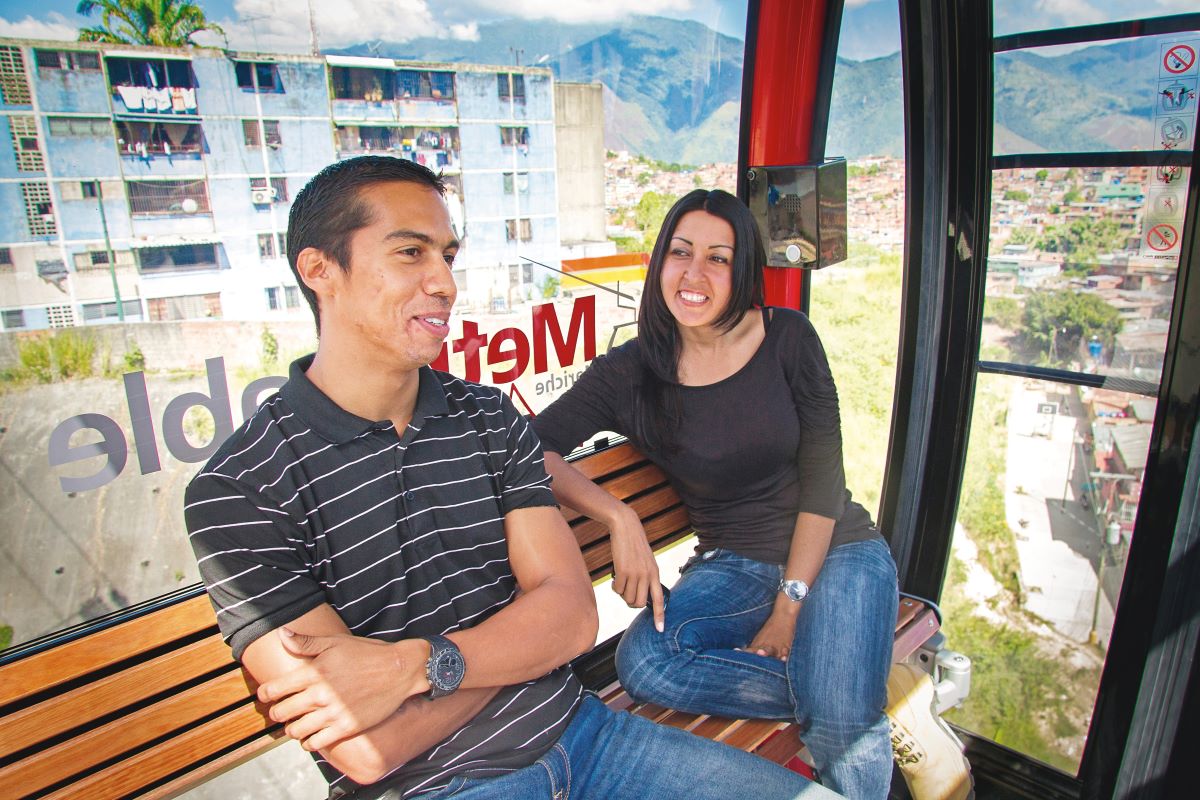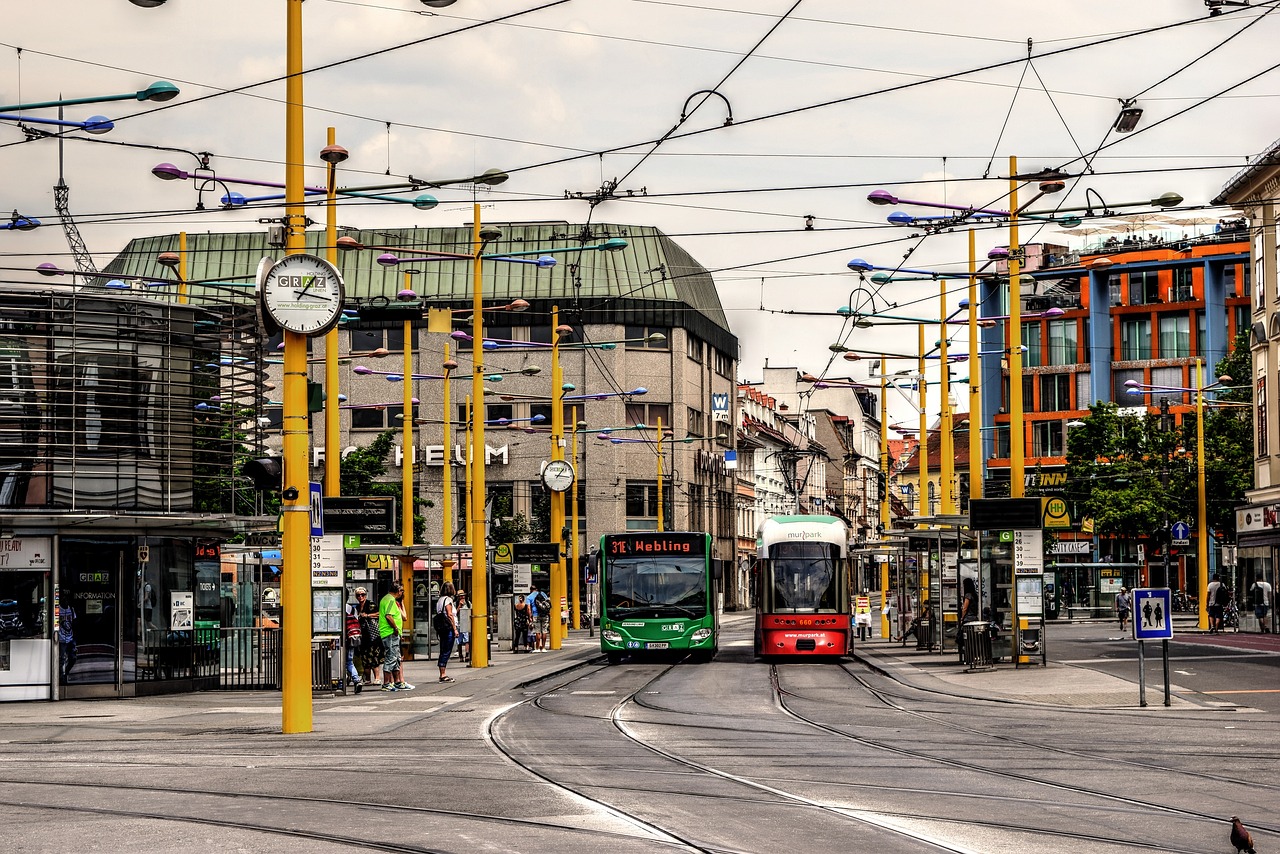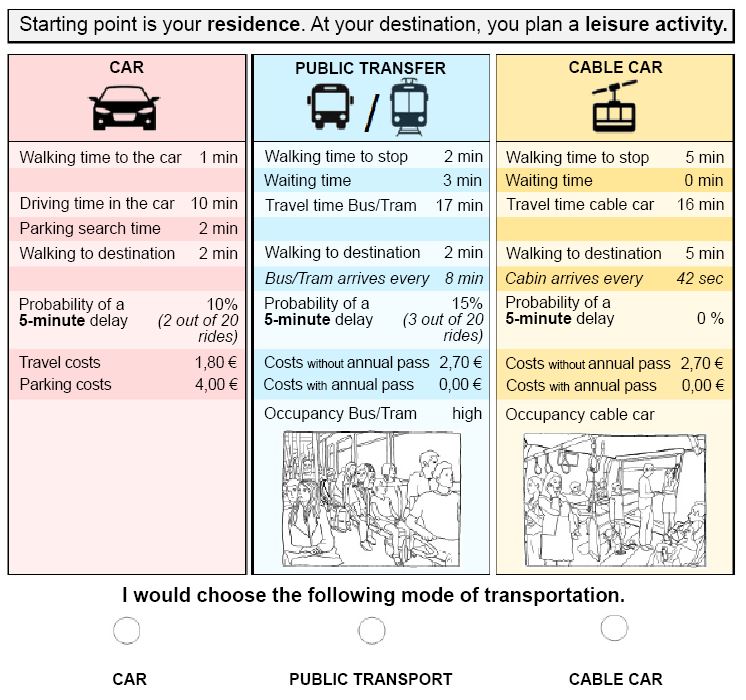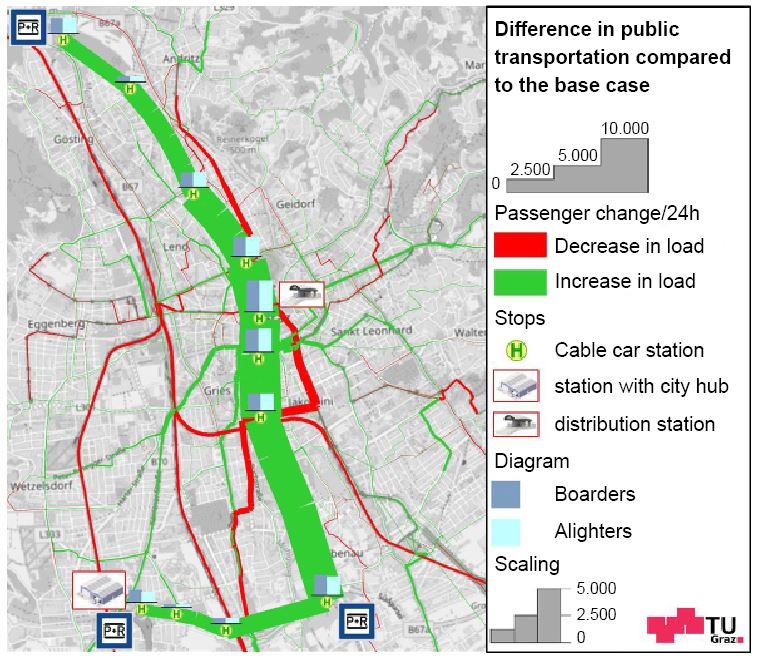
Cities, SI Urban 1/2024
Demand for cable cars
An urban cable car can be a cost-effective and efficient solution to expand the capacities of public transportation systems (PT) in medium-sized European cities.
The unconventional urban transport mode is already operating in several South American cities, and cable car manufacturers now want to establish a foothold in the European market.
Background
Hence, in recent years, numerous feasibility studies have been conducted in many European cities. However, the potential demand for urban cable cars has only been estimated or modeled without considering specific characteristics, according to transportation researchers Karl Hofer and Martin Fellendorf from the Technical University of Graz:
“Many feasibility studies consider urban cable cars only as part of traditional public transportation. Cable car-specific parameters for mode choice are not considered.“
Therefore, they have designed a new transportation demand model. The model refers to Graz as an example of a medium-sized European city.
The dense construction in the historic city center makes it difficult to expand conventional infrastructure (bus & tram), and the Greater Graz area is also the fastestgrowing urban area in Austria.
TRAM, BUS, AND SOON A CABLE CAR?
Traditional modes of transportation still operate in Graz. However, there is demand for an urban cable car.

Approach
The first step, a multi-stage mobility survey, is followed by its analysis, according to the two researchers: “In the case of Graz, the survey focused on the corridors along the planned route among the resident population.“ The Revealed-Preference survey was based on the Contiv design. Commuters were also surveyed.
Based on the results of this first stage of mobility survey, in-depth personalized interviews are conducted using the Stated Choice Method.
“This survey method is particularly suitable when it comes to the demand effects of a measure that has not yet been implemented and whose effects cannot yet be observed in reality,“ emphasize Hofer and Fellendorf.
This is the case with the urban cable car fully integrated into public transportation.
In the third step, extensions of the macroscopic transportation demand model are necessary. “Here, we focus on integrating the cable car transportation system into the calibrated transportation demand model,“ report the researchers. In the case of Graz, they identified different scenarios. These served as the basis for forecasting passenger potential.
In the final step, the researchers evaluate the system impact. “Building on this, we can recognize the effects of the cable car by comparing conditions with and without the measure using key indicators,“ say Hofer and Fellendorf.

Survey & integration
An urban cable car differs from traditional public transportation systems (bus, tram) due to its specific characteristics, emphasize the researchers: “Due to its constant availability, passengers do not perceive any waiting time.“
Operating on its own level, it is independent of traffic conditions, and there are no delays. And due to short headway times (15 to 50 seconds), cabin occupancy tends to be lower.
Previous personal experiences with cable cars as well as opinions on the planned urban cable car also play an important role in mode choice.
“Potential users cite reasons such as fear of heights, sense of security, or general rejection of a new urban transportation system,“ say Hofer and Fellendorf.
Therefore, the researchers took these specific characteristics into account both in the conducted Stated Choice Experiment and in the integration of the cable car into the transportation demand model.
The existing Multinomial Logit model of mode choice was replaced by a Nested Logit model. “In this, we model a hierarchical mode choice, where first a share for public transportation is calculated, which is then divided among the various public transportation modes.“

Advantage: No delays
The conducted model estimates show that both lower occupancies in the transportation mode and the absence of delays have a significant influence on the choice of the cable car.
Users tend to accept a longer travel time in the cable car compared to shorter travel times by car or public transportation, as the latter include the risk of delay. Personal attitude also shows a significant influence.
“In addition, we analyzed the probability of choosing traditional public transportation and the cable car from the Stated Choice Experiment depending on travel time. The utility ratio follows a typical s-shaped Weibull distribution function,“report the researchers.
“Thus, we were able to describe the decisionmaking behavior of mode choice and determine shape parameters.“
System impact & outlook
The modeled passenger numbers for Graz from five calculated scenarios of the cable car are in the order of magnitude of counted passenger numbers of tram lines (20,000-30,000 passengers).
In the inner-city area, the cable car exhibits up to 24,000 rides as cross-sectional load. Concurrent tram services show a decrease in passenger volume of up to 3,000 at the cross-section, say the researchers: “One-third of passengers are generated by commuter trips and one-sixth by tourists.“







